For the 2025 school year, there is 1 public preschool serving 310 students in Burrillville School District.
Public Preschools in Burrillville School District have a diversity score of 0.25, which is less than the Rhode Island public preschool average of 0.67.
Minority enrollment is 14% of the student body (majority Hispanic), which is less than the Rhode Island public preschool average of 53% (majority Hispanic).
Overview
This School District
This State (RI)
# Schools
5 Schools
59 Schools
# Students
2,011 Students
19,920 Students
# Teachers
165 Teachers
1,495 Teachers
Student : Teacher Ratio
12:1
12:1
District Rank
Burrillville School District, which is ranked within the bottom 50% of all 62 school districts in Rhode Island (based off of combined math and reading proficiency testing data) for the 2021-2022 school year.
The school district's graduation rate of 85-89% has stayed relatively flat over five school years.
Overall District Rank
#38 out of 63 school districts
(Bottom 50%)
(Bottom 50%)
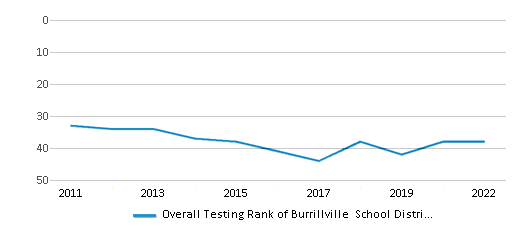
Math Test Scores (% Proficient)
19%
27%

Reading/Language Arts Test Scores (% Proficient)
28%
33%
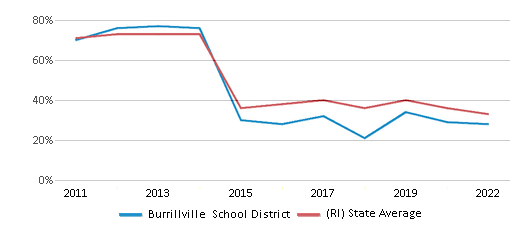
Science Test Scores (% Proficient)
29%
31%
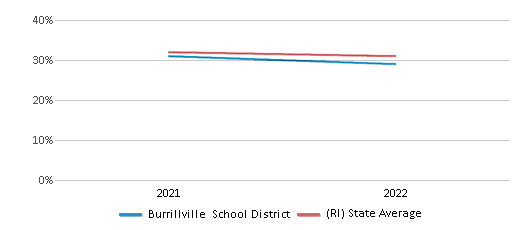
Graduation Rate
85-89%
83%
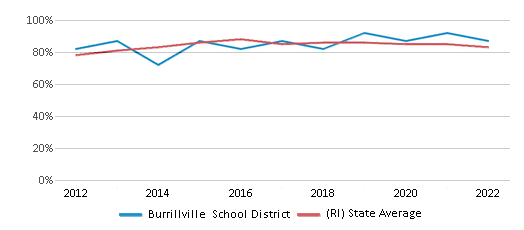
Students by Ethnicity:
Diversity Score
0.22
0.67
# American Indian Students
1 Student
156 Students
% American Indian Students
n/a
1%
# Asian Students
13 Students
571 Students
% Asian Students
1%
3%
# Hispanic Students
130 Students
6,341 Students
% Hispanic Students
6%
32%
# Black Students
33 Students
1,836 Students
% Black Students
2%
10%
# White Students
1,773 Students
9,320 Students
% White Students
88%
47%
# Hawaiian Students
2 Students
40 Students
% Hawaiian Students
n/a
1%
# Two or more races Students
53 Students
1,156 Students
% of Two or more races Students
3%
6%
Students by Grade:
# Students in PK Grade:
40
3,320
# Students in K Grade:
132
3,080
# Students in 1st Grade:
138
2,986
# Students in 2nd Grade:
144
2,902
# Students in 3rd Grade:
129
2,651
# Students in 4th Grade:
151
2,805
# Students in 5th Grade:
163
2,071
# Students in 6th Grade:
146
56
# Students in 7th Grade:
158
27
# Students in 8th Grade:
160
22
# Students in 9th Grade:
165
-
# Students in 10th Grade:
163
-
# Students in 11th Grade:
152
-
# Students in 12th Grade:
170
-
# Ungraded Students:
-
-
District Revenue and Spending
The revenue/student of $20,360 in this school district is less than the state median of $22,250. The school district revenue/student has stayed relatively flat over four school years.
The school district's spending/student of $19,243 is less than the state median of $21,467. The school district spending/student has stayed relatively flat over four school years.
Total Revenue
$41 MM
$2,998 MM
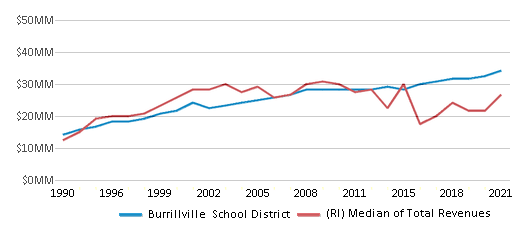
Spending
$39 MM
$2,892 MM
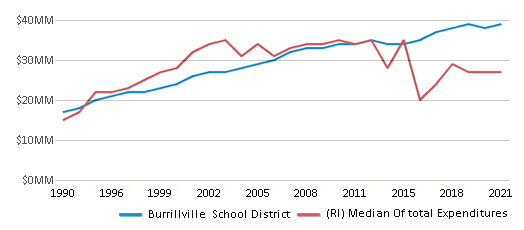
Revenue / Student
$20,360
$22,250
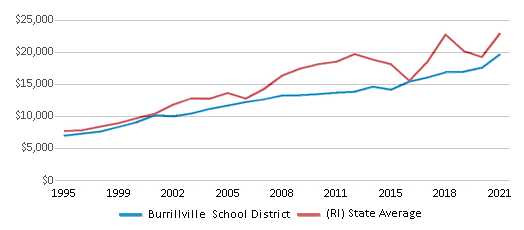
Spending / Student
$19,243
$21,467
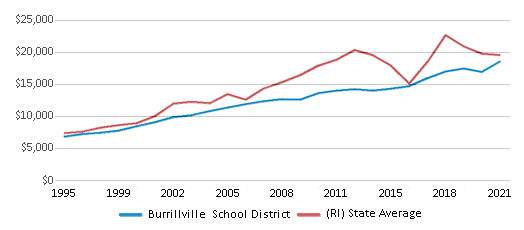
Best Burrillville School District Public Preschools (2025)
School
(Math and Reading Proficiency)
(Math and Reading Proficiency)
Location
Grades
Students
Rank: n/an/a
135 Harrisville Main Street
Harrisville, RI 02830
(401) 568-1340
Harrisville, RI 02830
(401) 568-1340
Grades: PK-1
| 310 students
Recent Articles
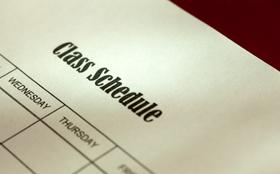
Year-Round Or Traditional Schedule?
Which is more appropriate for your child? A year-round attendance schedule or traditional schedule? We look at the pros and cons.

Why You Should Encourage Your Child to Join a Sports Team
Participating in team sports has a great many benefits for children, there is no doubt. In this article you will learn what those benefits are.

White Students are Now the Minority in U.S. Public Schools
Increasing birth rates among immigrant families from Asia and Central and South America, combined with lower birth rates among white families, means that for the first time in history, public school students in the United States are majority-minority. This shift in demographics poses difficulties for schools as they work to accommodate children of varying language abilities and socio-economic backgrounds.





